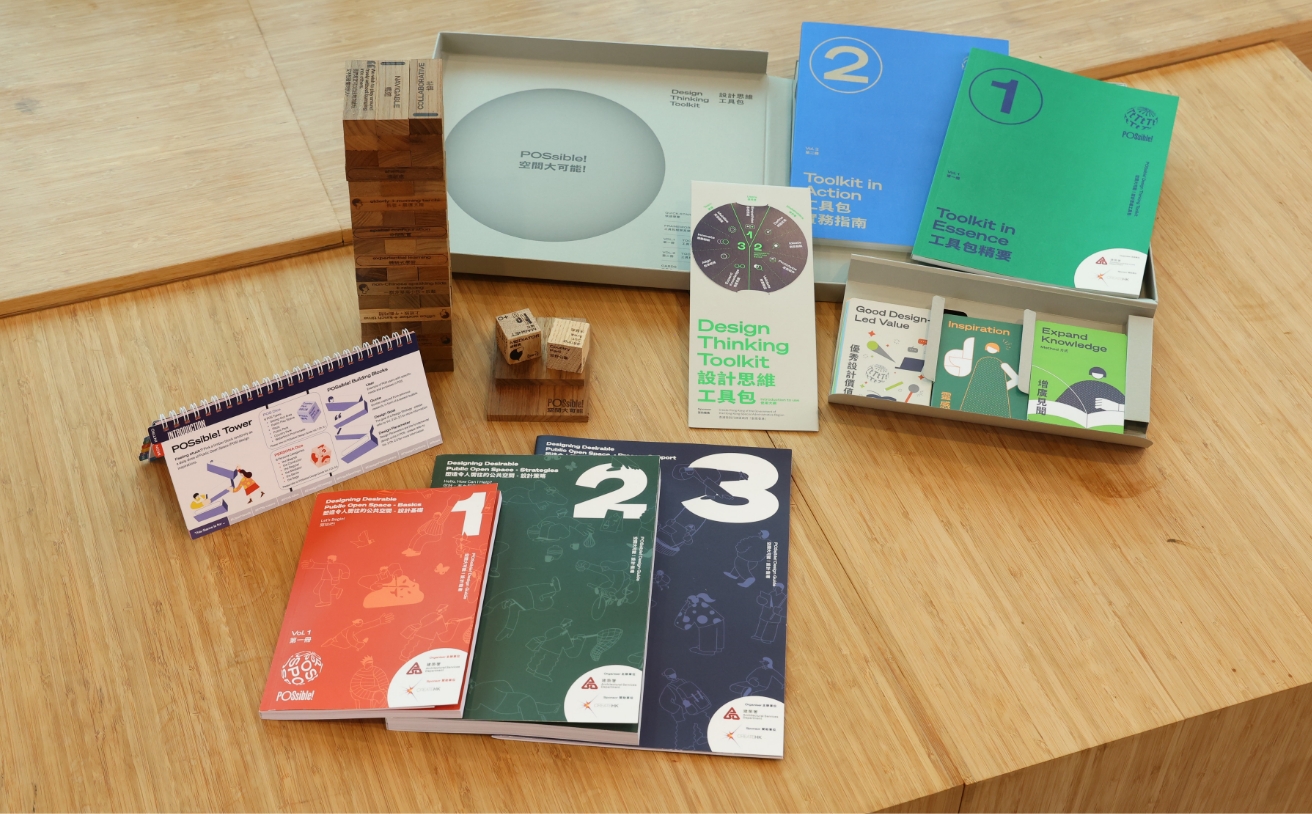Stakeholder Interview
Interview with External Stakeholder
Participants in POSsible! Public Open Space Design Lab Project

Mr. Henry WONG Assistant Director (Leisure Services)1 Leisure and Cultural Services Department
Ms. Sarah Mui Co-Founder & Design Director onebite
Mr. Eric HO Co-founder & Director ARCHITECTURE COMMONS
Mr. Jacky CHAN Manager (Play Environment) Playright Children’s Play Association

With a view to enhancing urban living that meets the future needs of communities and the general public, the ArchSD pioneered a territory-wide, cross-sectoral design empowerment project “POSsible! Public Open Space Design Lab” in 2021 to reinvent creative and sustainable public open spaces (POSs) for improving quality of life, social well-being and cultural vibrancy in highly urbanised Hong Kong.

POSsible! Symposium – POS Design

The cross-sectoral collaborative project comprised field studies, literature reviews, stakeholder and community engagement workshop series, and the finale symposium attended by local and international architects and experts on experience and best practice sharing.
With funding support from the Cultural and Creative Industries Development Agency (ex-Create Hong Kong), the ArchSD sought to achieve the following outcomes:
- Promote design thinking and social innovation in upgrading and creating future POSs,
- Foster open dialogue on issues for future POS development,
- Bring various stakeholders together for exchanging ideas and co-creating innovations and solutions, and
- Formulate the POSsible! Design Guide and POSsible! Design Thinking Toolkit through a ground-breaking participatory approach as the future framework for guiding sustainable POS development in Hong Kong.

1. Planning and Design: Incorporating the needs and perspectives of POS users, design and management professionals, businesses, NGOs and members of the public, as well as making reference to the United Nations Habitat Quality Public Open Space Dimensions, the project compiled the tailor-made POSsible! Design Guide and POSsible! Design Thinking Toolkit, which provide exemplary guidelines, methodologies, evaluation criteria and tools for various industries to create and revitalise future POSs, making POSs inclusive-, eco- , social-, play-, rest- and leisure-possible for all people, ages and abilities.
2. Stakeholder and Inclusive Engagement: One of the most appreciative aspects of the project were the multidisciplinary insights and the extensive and large-scale stakeholder and community engagement activities involved in exploring and innovating POS design in various types (e.g. sitting-out areas, parks, playgrounds, waterfront promenade) and tackling simulated real world scenarios. The design guide and toolkit resulting from this participatory process, first of its kind in Hong Kong, have provided a common language to better understand the desirable level of inclusivity, quality, social cohesion and community vibrancy, thereby addressing the unique needs of diverse users and communities.
3. Resilient and Sustainable Practices: Adapting and mitigating the impacts of climate change, the project and its cross-sectoral partnership approach also offered an important platform to promote climate-resilient infrastructure and urban greenery for future POS development, contributing to reduce carbon footprint while improving the quality of the living environment and a liveable community for the public.

POSsible! Design Guide and POSsible! Design Thinking Toolkit

Community engagement activity in exploring and innovating POS design

Sham Shui Po Park

The newly refurbished inclusive playground at the Sham Shui Po Park, as part of the Transformation of Public Play Space plan by the Leisure and Cultural Services Department, has adopted the future design thinking framework in renovating the existing POS with extensive community participation and engagement works to refine operation and management arrangements.
The successful implementation solicited encouraging response, presenting exciting opportunities to apply design thinking and the two tools widely in future POS development projects, and transform future POSs into distinctive landmarks in Hong Kong, thereby meeting the aspirations of local residents as well as international visitors, and fostering a conducive environment to facilitate the development of arts, sports, culture and creative sectors.

ArchSD appreciated the insights given by different stakeholders from other departments, POS users, design and management professionals, businesses and NGOs to explore how to improve the design of local POSs. They provided many valuable views on the development of design toolkit and guide. We hope that every stakeholder can become a POS designer with the help of the user-friendly and efficient design guide and toolkit to create a quality living environment and a liveable community for the public.